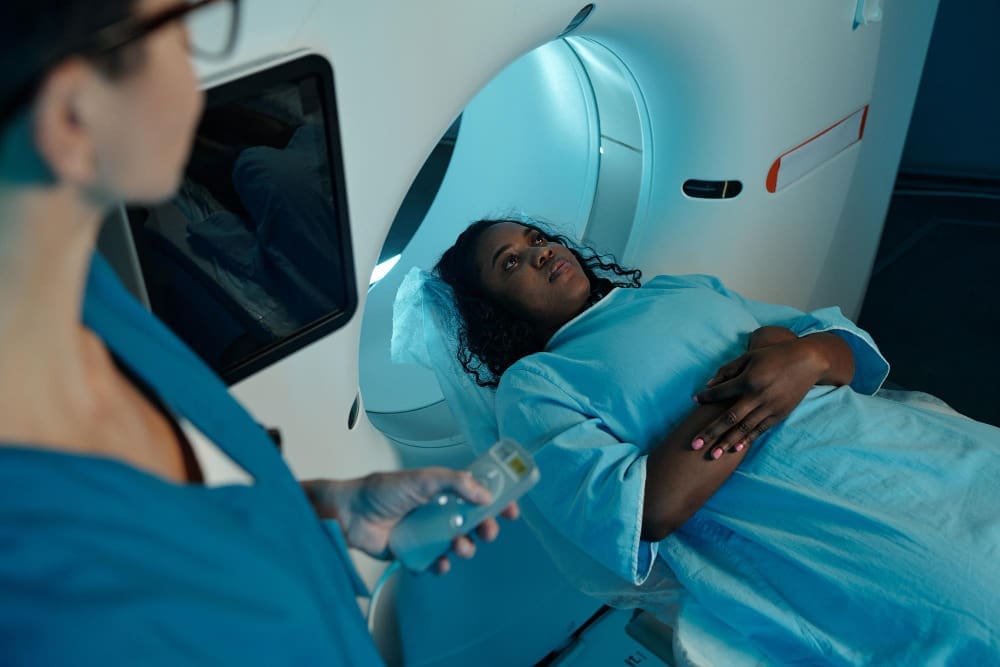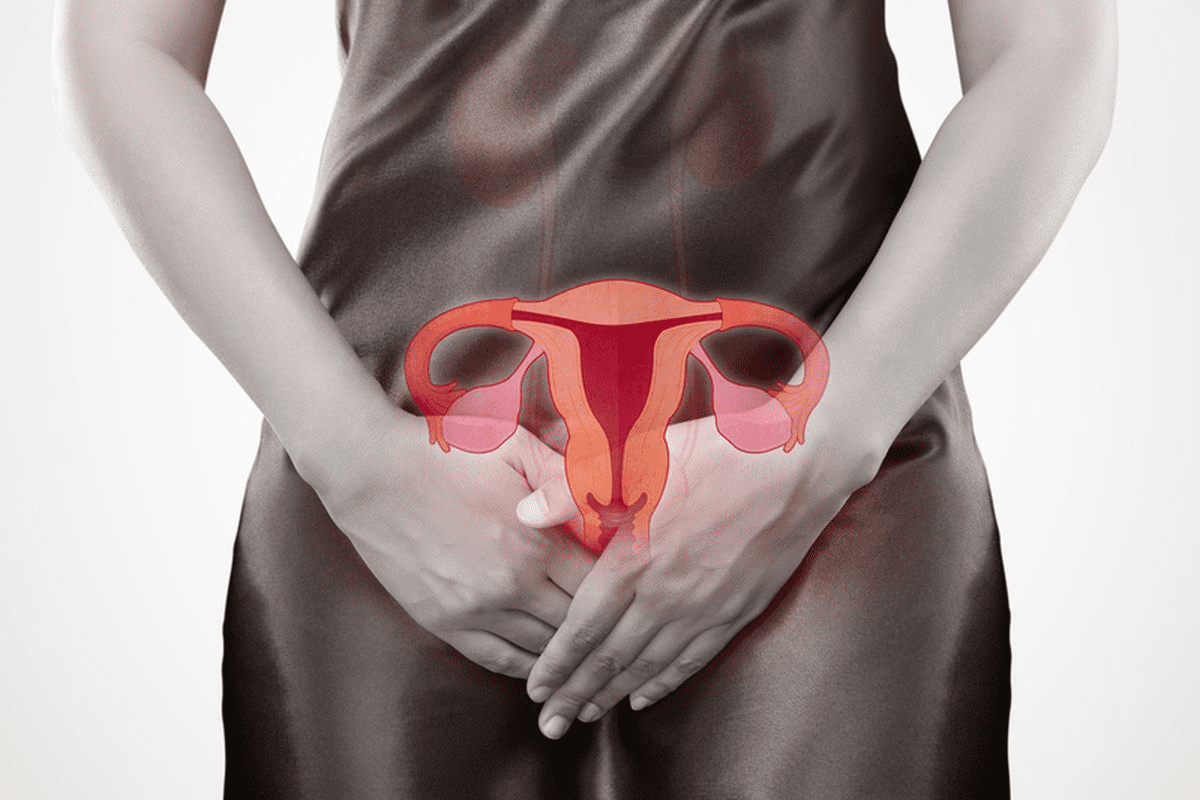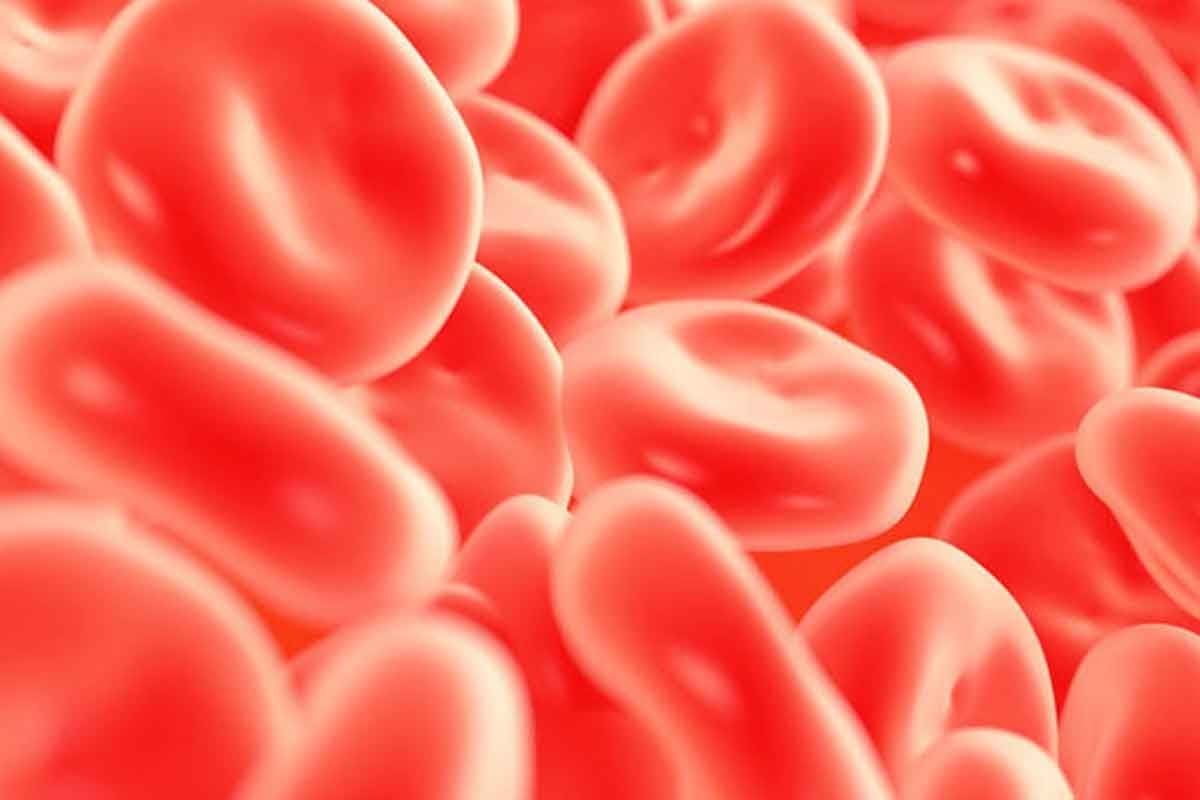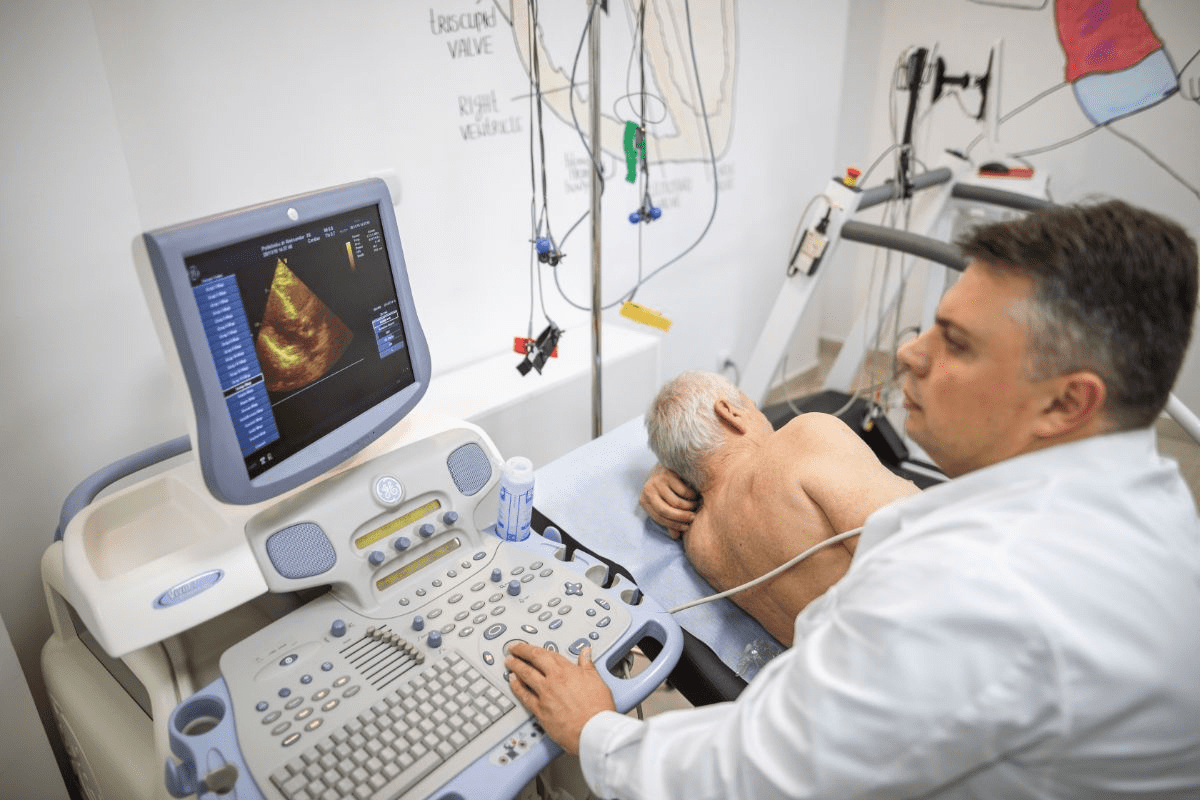Last Updated on November 27, 2025 by Bilal Hasdemir

Getting ready for a PET scan is more than just showing up on time. You need to eat the right foods to get accurate results. A low-carb and high-protein diet helps your body use the tracer better.
Did you know eating the wrong foods before a PET scan can mess up the results? You might have to do the scan again. It’s very important to follow the right pet scan diet.
Key Takeaways
- Follow a low-carb diet to prepare for a PET scan.
- Incorporate high-protein foods into your meals.
- Avoid consuming foods that are high in sugar and carbohydrates.
- Understand the importance of pet scan dietary prep for accurate results.
- Consult your doctor for specific dietary instructions before your PET scan.
Understanding PET Scans and Their Dietary Requirements
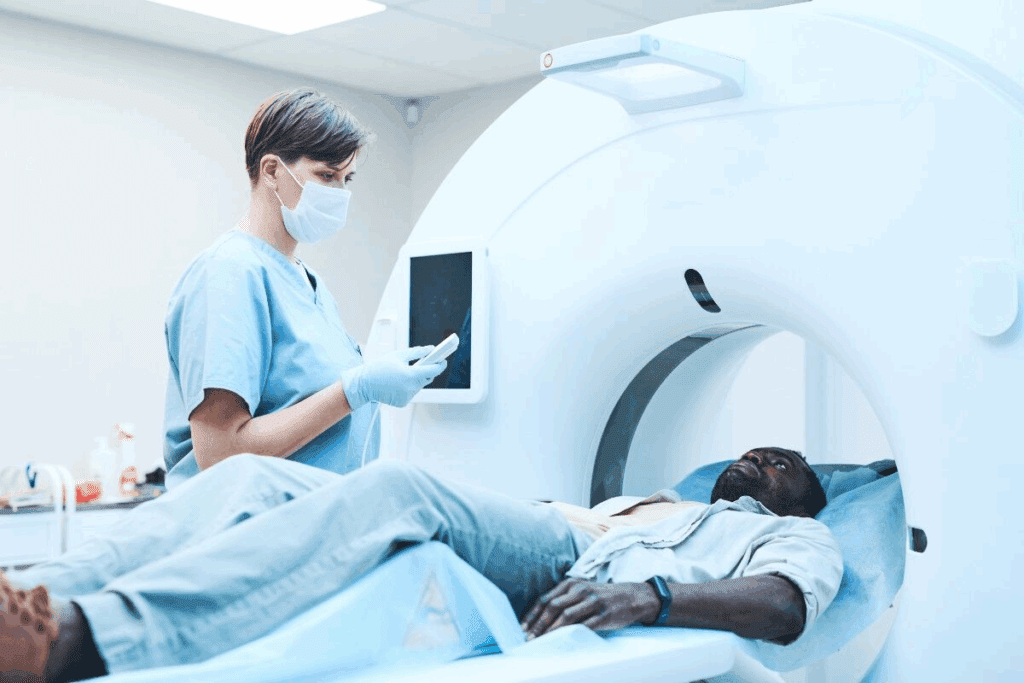
It’s important to know about PET scans and what to eat before them. A PET scan is a detailed test that shows how the body works. It helps doctors find and treat health problems.
What is a PET scan and how does it work?
A PET scan uses a special tracer called Fluorodeoxyglucose (FDG). This tracer is taken up by cells in the body. The PET scanner then finds the positrons from the tracer, making detailed images of how the body works.
This test shows how different tissues work. For example, cancer cells use more energy than normal cells. So, they show up more on the scan.
Why diet matters for accurate PET scan results
What you eat before a PET scan is very important. Foods high in sugar or carbs can mess up the scan. Eating less of these helps the tracer work better, giving clearer images.
- Low-carb diet: Helps in achieving better image quality by reducing glucose levels in the body.
- Fasting: Often required before a PET scan to minimize glucose interference.
- Hydration: Adequate water intake is encouraged to help the body process the tracer.
Following the right diet before a PET scan is key. It makes sure the scan results are accurate. This helps doctors diagnose and treat better.
The Science Behind PET Scan Dietary Restrictions
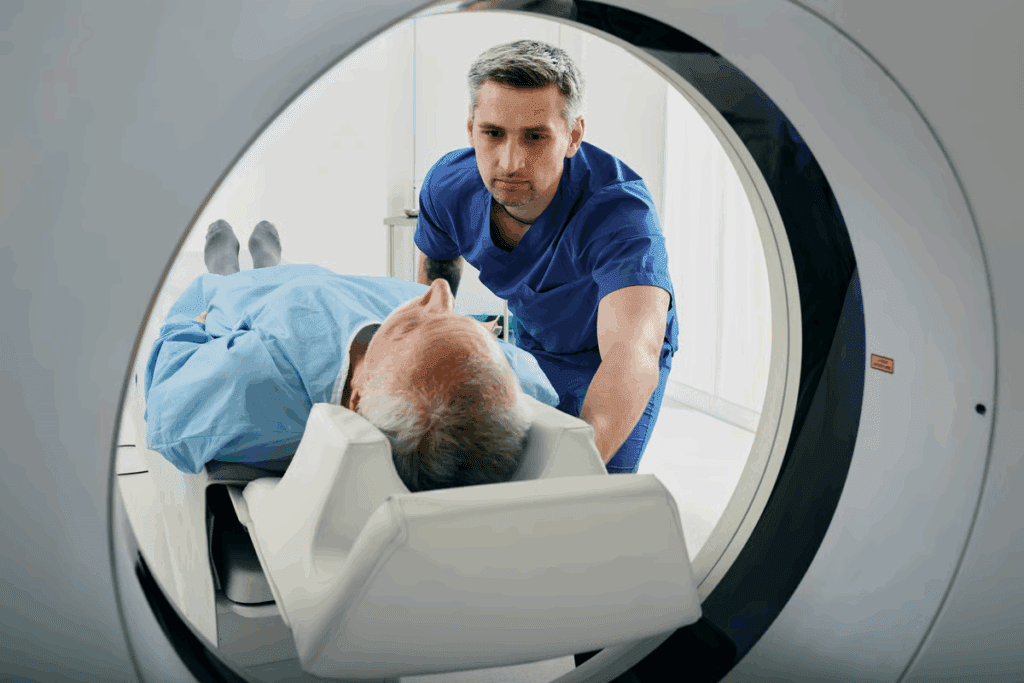
The rules for what to eat before a PET scan come from the science of glucose metabolism and radioactive tracers. To get why some foods are off-limits, it helps to know how PET scans work and how glucose fits into the picture.
Glucose Metabolism and Radioactive Tracers
PET scans use radioactive tracers to see how the body works. The most common one, Fluorodeoxyglucose (FDG), is a special sugar molecule with a radioactive tag. When you get it, it goes to cells based on how much sugar they use.
Cancer cells use a lot of sugar, so they grab more FDG. The PET scan picks up this signal, showing where the body is most active.
The link between glucose and FDG is key to understanding PET scan diet rules. Eating too much sugar or carbs can change your body’s sugar levels. This might mess with how FDG works.
How Carbohydrates Affect Scan Quality
Carbohydrates are important for PET scan prep because they affect your body’s sugar levels. Eating a lot of carbs or sugary drinks can:
- Make your sugar levels go up, which might lower FDG uptake in important areas.
- Change where FDG goes, making the scan less accurate.
- Make it harder to see the difference between normal and abnormal tissues.
Eating less carbs before a PET scan helps avoid these problems. This way, the scan can give you clear and reliable results. Here’s a table showing how different foods affect your PET scan.
| Food Type | Effect on Glucose Levels | Impact on PET Scan Quality |
| High-Carbohydrate Foods | Increases glucose levels | Reduces scan accuracy |
| Low-Carbohydrate Foods | Maintains stable glucose levels | Improves scan accuracy |
| Sugary Drinks | Rapidly increases glucose levels | Significantly reduces scan accuracy |
Knowing the science behind PET scan diet rules helps patients prepare better. This ensures the scan results are as good as they can be.
General Fasting Guidelines Before a PET Scan
To get clear images from a PET scan, patients must follow strict fasting rules. Fasting before a PET scan is key for image quality.
Standard Fasting Periods
The fasting time before a PET scan is usually 4 to 6 hours. But, it can change based on the imaging facility and the scan type. Patients can drink water but must avoid food and other drinks.
Fasting Guidelines Summary:
| Fasting Duration | Allowed Intake | Not Allowed |
| 4-6 hours | Water | Food, other beverages |
Exceptions to Fasting Rules
While fasting is important for PET scan prep, there are exceptions. Diabetic patients might need to adjust their fasting to keep blood sugar in check. It’s vital to tell your doctor about any health conditions or meds that could impact fasting.
Knowing these guidelines helps patients get ready for their PET scan. This ensures the results are as accurate as they can be. Always talk to your healthcare provider for personalized advice.
Can You Eat Before a CT Scan? Comparing with PET Scan Requirements
When getting ready for a CT scan, knowing the dietary rules is key. These rules can be different from those for a PET scan. Both tests are used for diagnosis, but how you prepare can vary, mainly about what you eat.
CT Scan with and Without Contrast Dietary Guidelines
A CT scan is a test that makes detailed images of your body. The food rules for a CT scan depend on if it’s with or without contrast.
For a CT scan without contrast, you can usually eat and drink as you normally do. But, it’s smart to listen to the specific advice from your healthcare provider or the imaging center.
If your CT scan is with contrast, the rules might be stricter. The contrast is given through an IV, and while it doesn’t involve food, some places might ask you to skip big meals before the scan.
| CT Scan Type | Dietary Guidelines |
| Without Contrast | Normal eating and drinking allowed |
| With Contrast | Avoid heavy meals; follow specific instructions |
Key Differences Between CT and PET Scan Preparation
The main difference in preparation for CT and PET scans is their purpose and the substances used. A PET scan uses a radioactive tracer to see how cells work in your body.
On the other hand, a CT scan looks at body structures and might use contrast to improve images. PET scans have stricter food rules because of how glucose affects the tracer.
It’s important for patients to understand these differences. While CT scans might have looser food rules, PET scans need careful control of carbs to get accurate results.
Breakfast Options for the Day of Your PET Scan
Choosing the right breakfast is key on the day of your PET scan. What you eat can affect the scan’s quality. So, picking the best foods is very important.
Protein-rich Breakfast Choices
Going for a protein-rich breakfast is a smart move. Foods like eggs, Greek yogurt, and cottage cheese are great. They’re filling and meet PET scan dietary needs. Plus, they’re low in carbs.
- Eggs: Scrambled, boiled, or in an omelette, eggs are a versatile and protein-rich choice.
- Greek Yogurt: High in protein and low in carbs, Greek yogurt is an ideal breakfast component.
- Cottage Cheese: Rich in protein and low in carbohydrates, cottage cheese is another good option.
Low-carb Breakfast Ideas
Low-carb breakfasts are also good for a PET scan. They keep you in the right dietary zone. Here are some ideas:
- Avocado Toast: Using low-carb bread, avocado toast can be a satisfying and compliant choice.
- Smoked Salmon: Rich in protein and healthy fats, smoked salmon is a nutritious option.
- Spinach and Feta Omelette: This is not only low in carbs but also packed with nutrients.
Sample Breakfast Menu Before a PET Scan
Here’s a sample breakfast menu that follows PET scan dietary guidelines:
- Scrambled eggs with spinach
- A serving of Greek yogurt
- A glass of water
This menu meets PET scan dietary needs and offers a balanced start to your day.
By picking the right breakfast, you can ensure your PET scan is accurate and helpful. Always talk to your healthcare provider for specific dietary advice.
Foods to Avoid Before Your PET Scan
Before a PET scan, knowing what foods to avoid is key. A PET scan uses your body’s metabolic activity to create images. What you eat before can change how your body works, affecting the scan’s results.
High-Carbohydrate Foods and Their Impact
High-carb foods should be limited before a PET scan. They can change your blood sugar levels. This can mess with the scan’s accuracy by altering where the tracer goes.
Examples of high-carbohydrate foods to limit include:
- Bread and baked goods
- Pasta and rice
- Sugary cereals
- Fruit juices and sweetened beverages
As “The American Cancer Society” says, diet before a PET scan is very important for cancer patients. It helps make sure the scan can find cancer cells correctly.
Sugary Foods and Beverages to Eliminate
Sugary foods and drinks are bad before a PET scan. They quickly raise your blood sugar. This can mess with how the PET tracer works.
“Eating high-sugar foods before a PET scan can make the images not as good. This might mean you need to do the scan again.”
Sugary items to avoid include:
- Candies and sweets
- Sodas and sweetened teas or coffees
- Desserts and sweetened yogurts
Following a limited carbohydrate diet for your PET scan is a good idea. Always listen to your healthcare provider or the imaging center about what to eat before your scan.
The 24-Hour Diet Plan Before a PET Scan
To get the best results from your PET scan, follow a special diet for 24 hours before. This diet is key to getting clear images for your doctor to diagnose you.
Dinner Recommendations the Night Before
The night before your PET scan, eat low in carbs and high in protein. This reduces glucose intake. PET scans use a glucose tracer to show where glucose is being used in your body.
- Grilled chicken or fish with green vegetables
- Salads with chicken, turkey, or tofu
- Beef or vegetable stir-fry with a little oil
Stay away from foods high in carbs like pasta, rice, and bread. Choose protein-rich foods and veggies instead.
Snack Options During Preparation Period
For the 24 hours leading up to your scan, pick snacks that are low in sugar and carbs. They should be high in protein and fiber. Good choices include:
- Raw veggies with hummus
- Nuts and seeds like almonds and chia seeds
- Cheese sticks or hard-boiled eggs
These snacks will keep you full without raising your glucose levels.
When to Start Dietary Modifications
Start changing your diet 24 hours before your PET scan. Follow the guidelines from your healthcare provider or the PET scan prep instructions.
Always listen to the specific instructions given to you. Different PET scan protocols might have different dietary needs.
Special Dietary Considerations for Cancer Patients
For cancer patients, getting ready for a PET scan is more than just fasting. It’s about carefully planning your diet. This is important to get accurate results, which helps doctors plan your treatment.
Diet Before PET Scan for Cancer Diagnosis
Cancer patients need a special diet before a PET scan. Avoiding high-carbohydrate foods is key because they can mess with the scan’s accuracy. Instead, eat protein-rich foods and low-carb vegetables.
| Food Group | Recommended Foods | Foods to Avoid |
| Proteins | Chicken, Fish, Eggs | Processed Meats |
| Vegetables | Leafy Greens, Broccoli, Cauliflower | Corn, Potatoes, Peas |
| Fruits | Berries, Citrus Fruits | Bananas, Grapes |
Nutritional Support During Cancer Treatment
Nutritional support is key for cancer patients, not just for the PET scan but during treatment too. Good nutrition helps patients handle treatment better and can lead to better outcomes. Staying hydrated is also important, so drink lots of water.
Cancer patients should talk to their healthcare team to create a diet plan. This plan should fit their nutritional needs and prepare them for the PET scan. It should also consider their health, the type of cancer, and their treatment plan.
Hydration Guidelines for PET Scans
Proper hydration is key when preparing for a PET scan. It’s important for the body’s health and for medical imaging. Drinking enough water helps the tracer spread evenly, improving scan quality.
Can you drink water before a PET scan?
Drinking water before a PET scan is usually okay. Water doesn’t have glucose or sugars that could mess up the scan results. Staying hydrated can make the tracer spread better, leading to more accurate scans. But, always check with your healthcare provider or the PET scan center for specific rules.
Other beverages: restrictions and allowances
While water is safe, other drinks might not be. Avoid juices, sodas, and sugary coffee. Some places might let you have black coffee or unsweetened tea, but it depends on the place.
| Beverage | Allowed Before PET Scan |
| Water | Yes |
| Juice/Soda | No |
| Black Coffee/Unsweetened Tea | Maybe (check with facility) |
It’s important to follow your healthcare team’s dietary advice for the best PET scan results. If you’re not sure what to drink, it’s best to ask.
Common Misconceptions About PET Scan Preparation
PET scan preparation is often misunderstood, mainly about what to eat before the scan. Many patients are unsure about their diet. This confusion can cause stress and might affect the scan’s accuracy.
It’s important to know the dietary rules for a PET scan. These rules help make sure the scan works well.
Myth: All Food Must Be Avoided
Many think they can’t eat anything before a PET scan. But, fasting rules can change based on the scan type and patient health. For example, some patients might eat certain foods or protein-rich meals. Always follow your doctor’s exact instructions.
Allowed foods include protein and low-carb veggies. Knowing what you can eat makes getting ready easier.
Myth: Dietary Restrictions Are the Same for All Imaging Tests
Some think the diet rules for a PET scan are the same as for a CT scan. But, these rules can be very different. For instance, a CT scan with contrast might need different prep than a PET scan. It’s key to know these differences for the right prep.
When looking at PET scan vs CT scan prep, each has its own needs. PET scans need a special diet for the tracer to work right. CT scans might use contrast material differently.
By following the right diet, patients help make sure their PET scan results are good for their doctors.
Additional Factors Affecting PET Scan Preparation
PET scan preparation is more than just fasting. Many other factors can change the scan’s results. Diet is key, but lifestyle and habits also play a role.
Caffeine and PET Scans
Caffeine can change how our bodies work. Drinking caffeine before a PET scan might mess up the scan’s accuracy. It’s best to avoid caffeine for at least 24 hours before the scan to get the best results.
Smoking Before a PET Scan
Smoking can change blood flow and affect the tracer in PET scans. It’s recommended to stop smoking for as long as possible before the scan, ideally a few hours. This helps make the scan results more accurate.
Exercise Restrictions Before Imaging
Exercise can change blood flow and glucose use, affecting PET scan results. Strenuous exercise should be avoided for at least 24 hours before the scan. But, light exercise might be okay; check with your doctor first.
Medication Considerations
Some medications can change PET scan results. They might affect glucose use or the tracer. Tell your healthcare provider about all medications you’re taking before the scan. This helps make any needed changes.
| Factor | Recommendation |
| Caffeine | Avoid for at least 24 hours |
| Smoking | Refrain from smoking for as long as possible, ideally a few hours |
| Exercise | Avoid strenuous exercise for at least 24 hours |
| Medication | Inform healthcare provider about all medications |
Special Dietary Situations and Accommodations
Some health conditions need special care when getting ready for a PET scan. People with certain dietary needs or health issues must talk to their doctors. This ensures their PET scan results are right and reliable.
Diabetes and PET Scan Preparation
For those with diabetes, controlling blood sugar before a PET scan is key. Following the doctor’s advice on medication and food is vital. Sometimes, changes to insulin or diabetes meds are needed to avoid scan problems. Patients should be ready to share their blood sugar levels and any diet or medication changes.
Diabetics often eat a special diet to keep blood sugar stable. A low-carb diet is often suggested to affect PET scan results less. But, it’s important for patients to talk to their doctor about what’s best for them.
Dietary Restrictions for Patients with Other Health Conditions
People with other health issues, like kidney disease or stomach problems, might need special diets before a PET scan. For example, those with kidney disease might drink less or avoid certain foods. Those with stomach issues might need to eat differently to feel better during the scan.
Telling your doctor about any health conditions or dietary needs is very important before a PET scan. This lets the medical team give you the right advice and make any needed changes. This ensures the scan is accurate and you’re comfortable.
Understanding and dealing with these special dietary needs helps doctors prepare patients for PET scans. This leads to more accurate diagnoses and better treatment plans.
Conclusion
Proper dietary preparation is key for accurate PET scan results. Following the recommended dietary guidelines is important. It ensures the scan gives reliable information for diagnosis and treatment.
A pet scan diet means avoiding high-carb and sugary foods before the scan. Knowing what to eat before a pet scan is critical. It directly affects the scan’s quality.
By sticking to the dietary guidelines, patients help make their PET scan results accurate and reliable. This means making smart choices about food and drinks before the scan.
In short, careful pet scan preparation and following pet scan dietary prep guidelines are essential. They help achieve high-quality scan results. This way, patients contribute to a more accurate diagnosis and effective treatment plan.
FAQ
What can I eat for breakfast before a PET scan?
Eat a breakfast rich in protein and low in carbs before a PET scan. Good choices are scrambled eggs, spinach, and avocado. Stay away from sugary and high-carb foods.
Can I eat before a CT scan?
It depends on the CT scan type. For scans without contrast, you can eat normally. But, for scans with contrast, fasting is often required.
What is the diet before a PET scan for cancer patients?
Cancer patients should eat low-carb, high-protein before a PET scan. This helps get accurate results. Always talk to your doctor or a nutritionist for specific advice.
Can I drink water before a PET scan?
Yes, drinking water is usually okay before a PET scan. But, always check with your healthcare provider for their specific instructions.
What foods should I avoid before a PET scan?
Stay away from high-carb and sugary foods and drinks. This includes bread, pasta, sweets, and soda. A low-carb diet is best for accurate PET scan results.
How long should I fast before a PET scan?
The fasting time before a PET scan is usually 4 to 6 hours. But, your healthcare provider might give different instructions.
Can I have coffee or caffeine before a PET scan?
It’s best to avoid caffeine and other stimulants before a PET scan. They can impact the scan results. Always check with your healthcare provider.
Are there any special dietary considerations for diabetic patients undergoing a PET scan?
Yes, diabetic patients need to adjust their diet and medication before a PET scan. It’s important to talk to your healthcare provider to manage your diabetes and prepare for the scan.
Can I smoke before a PET scan?
Smoking is not recommended before a PET scan. It can affect the scan results. Try to avoid smoking for several hours before the scan.
Are there any exercise restrictions before a PET scan?
Avoid strenuous exercise before a PET scan. It can impact glucose metabolism and scan results. Always check with your healthcare provider for specific guidance.
Can I take my medications as usual before a PET scan?
It’s important to talk to your healthcare provider about your medications. They will tell you if you should keep taking them as usual before the PET scan.
Reference
- American College of Radiology. (2023). ACR–SPR practice parameter for performing FDG-PET/CT in oncology. Journal of the American College of Radiology, 20(3), 259–270. https://pubmed.ncbi.nlm.nih.gov/36822278/


